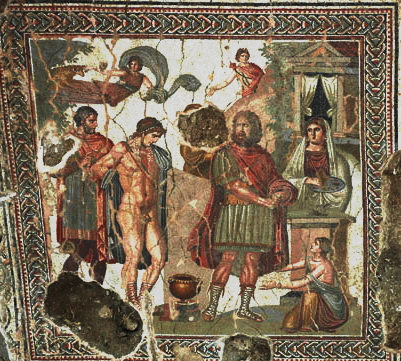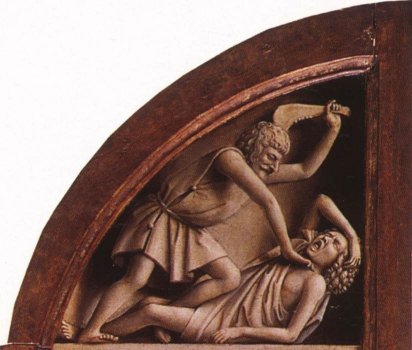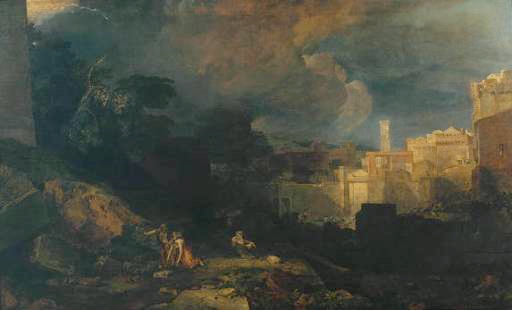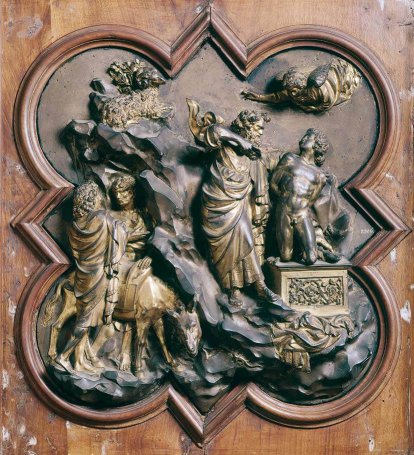|
Sacrifice in mythology and the Old Testament |
|
| Animal sacrifice is an almost universal phenomenon in early culture. It was thought that such sacrifice would appease angry gods, or would encourage them to do favours such as provide good harvests or military victories. In some cultures, animal sacrifices may
have acted as a substitute for human sacrifice. This is echoed in Greek
mythology, when a golden ram rescued Phrixos and Helle from the sacrificial
altar only to be sacrificed itself for its golden fleece.
Zeus turned the ram into the constellation Aries, the Zodiac symbol for
spring and rebirth (20th March - 21st April).
|
|
|
|
|
| Why lambs? The birth of lambs signified the rebirth of the season and the hope for a good harvest to come. |
|
| The
Old Testament The first reference to a sacrificial lamb is the story of Cain and Abel, in Chapter 4 of Genesis. Abel is a shepherd, while Cain cultivates crops. Abel sacrifices a lamb, while Cain has only fruit and veg. on offer, which God rejects. The upshot of all this, of course, is that Cain murders Abel. Interpretations of the story are legion. Perhaps the most interesting is that it reflects the change from pastoral farming to a more settled form of agriculture. Clearly, from this point on, the lamb is the only sacrifice that will satisfy God. |
|
|
|
|
|
The offering of Cain and Abel and the killing of Abel, van Eyck, Ghent altarpiece, Cathedral of St Bavo. |
|
Perhaps the most significant sacrificial event is the story of the tenth plague of Egypt, in which the blood of sacrificed lambs was painted over the doors of the Israelites to protect the firstborn. The Egyptians had no such protection. As in the Greek story, the saving of life is linked to the death of an animal. This event was commemorated in the spring festival of Passover, and it had a profound influence on the Christian religion to come. |
|
|
|
|
The story of Abraham and Isaac is sometimes considered a prefiguring of the events of the crucifixion. Isaac carries the wood for his fire, as Jesus did his cross. Isaac is saved at the last minute by God, and a ram caught up it the bushes nearby is substituted. Isaac lives on, as does the resurrected Jesus. The story thus illustrates once more the transition from human to animal sacrifice. Christian scholars point out the key difference between this story and the story of the crucifixion. Jesus went willingly to his death, while Isaac (and all those lambs) had no choice in the matter. On this point a good deal of Christian theology hangs. |
|
|
|
|





